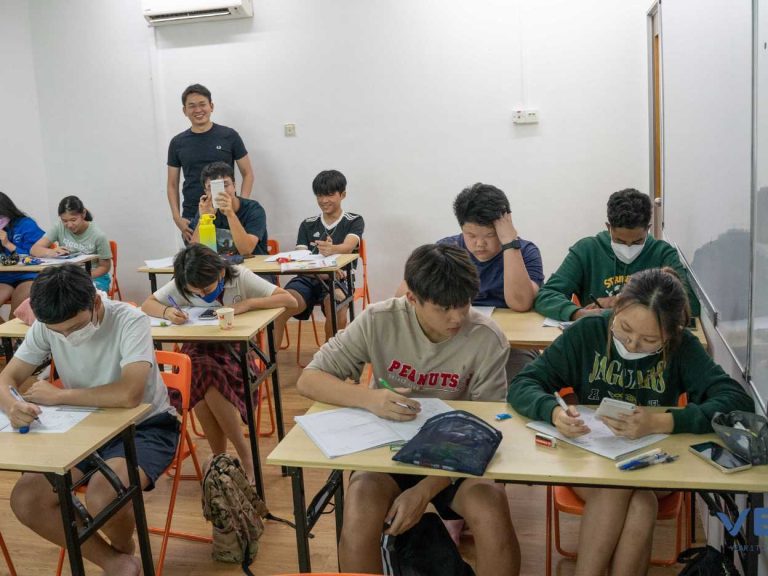CAT4 (Cognitive Abilities Test) is an assessment tool designed to measure a student's cognitive abilities. It is intended for use with students between the ages of 6 to 17 years old and is widely used in schools across the United Kingdom and Ireland.
The CAT4 is designed to help teachers understand their students' cognitive strengths and weaknesses, to identify areas where students may need additional support, and to provide better support in teaching strategies and classroom interventions.
The test is similar to an IQ test for adults and provides information about a student's potential and strengths, as well as highlighting any weaknesses they may have. Teachers can use this information to tailor their lessons to suit different learning types. For example, teacher can use visuals or audio to teach depending on the student's preference.
This guide aims to provide parents with a better understanding of the CAT4, including the areas tested and the information that the results will show.
CAT4 Purposes
Here are a few specific purposes of the Cognitive Abilities Test (CAT4):
• To understand how each student learns and thinks. The results of the CAT4 can help teachers and staff identify a student's strengths and weaknesses in different areas, and adapt their teaching methods to better suit the student's learning style.
• CAT4 results can be used to identify areas where a student may need additional support, and inform strategies for addressing these areas.
• Assist teachers group students who have similar learning abilities and characteristics together.
• Provide information for educational planning and interventions to identifies learning strategies for individual students.
What are the CAT4 levels?
The CAT4 test has 7 levels of difficulty which are aimed at different age groups. The content in each level is appropriate for that age group.
This comprehensive CAT4 practice tests cover all the skill batteries and question formats for Levels A to G.
• Year 4: Level A (8–9)
• Year 5: Level B (9–10)
• Year 6: Level C (10–11)
• Year 7: Level D (11–12)
• Year 8: Level E (12–13)
• Years 9 + 10: Level F (13–15)
• Years 11+: Level G (15–17+)
As the levels progress, the difficulty of the questions will increases to match the age of the child taking the assessment.
The test can help students make educational and career choices that align with their abilities and interests and optimize their study habits.
CAT4 Level A-G Test Structure Details
CAT4 is divided into levels A to G, with each level consisting of 8 short online tests. These tests assess a child's foundational abilities in verbal, numerical, and spatial skills. Each level focuses on three parts that evaluate these specific areas.
Part 1: Figure Classification, Figure Matrices
Part 2: Verbal Classification , Verbal Analogies, and Number Analogies
Part 3: Number Series, Figure Analysis, and Figure Recognition
CAT4 Test Levels in Detail
Level A
This test is typically given to children in the age range of 7.5 to 10 years old and is commonly administered during Year 4 in England or Primary 5 in Scotland.
Part One of the CAT4 test lasts for 20 minutes and includes figure classification and figure matrices. In this part, students are given 24 questions to answer, with a time limit of 10 minutes for each set of questions.
Part Two of the CAT4 test takes 26 minutes and consists of three sections: verbal classification, verbal analogies, and number analogies. In the verbal classification and verbal analogies sections, students have 24 questions to answer, with a time limit of 8 minutes for each set of questions. The number analogies section has 18 questions to be answered within 10 minutes.
Part Three of the CAT4 test lasts 26 minutes and includes three sections. The first section focuses on number series, with 18 questions that should be answered within eight minutes. The second section involves figure analysis, with 18 questions to be answered in nine minutes. The final section is about figure recognition, with 18 questions and a time limit of nine minutes.
Level B
The Level B CAT4 test is designed for students in Year 5, typically aged 8.5 to 11. The Level B test consists of four parts, each with two subsections.
The test is divided into three parts, with each part taking approximately 20 to 28 minutes to complete. In the first part, there are 48 questions equally divided between figure classification and figure matrices, with a time limit of 10 minutes for each.
The second part includes three types of questions. The first two focus on verbal skills, with 24 questions on verbal classification and 24 questions on verbal analogies, each with eight minutes allocated for completion. The last subsection of this part covers number analogies, with 18 questions to be answered within 10 minutes.
The final part of the Level B test comprises 18 questions related to number series, figure analysis, and figure recognition. The number series section has an eight-minute time limit, while the last two subsections have a nine-minute time limit.
Level C
The CAT4 Level C test is intended for Year 6 students (or Primary 7 in Scotland), covering an age range of approximately 9.5 to 12 years old.
The test is administered in three parts. The first part focuses on non-verbal reasoning, with 48 questions to be answered within a 20-minute time limit, evenly divided between figure classification and figure matrices.
The second part includes three subsections. Verbal classification and verbal analogies both have 24 questions, to be completed in 10 minutes each, while the number analogies subsection consists of 18 questions with a 10-minute time limit.
The final part of the test consists of 18 number series questions to be answered in eight minutes, and 36 questions to be answered in 18 minutes, evenly split between figure analysis and figure recognition.
Level D
The CAT4 Level D test is designed for students in Year 7 (or Secondary 1 in Scotland), suitable for use in testing children aged betweeen 10.5 and 13. As the levels progress, the difficulty of the questions will increases to match the age of the child taking the assessment.
Part One of the Level D test focuses on figure classification and figure matrices, consisting of a total of 48 questions to be completed within 20 minutes.
Part Two includes three question types: verbal classification, verbal analogies, and number analogies. Verbal classification and verbal analogies sections each have 24 questions to be answered within eight minutes. The number analogies section has 18 questions with a time limit of 10 minutes.
The final section, Part Three, encompasses 18 number series questions to be answered in eight minutes, followed by figure analysis and figure recognition sections, both consisting of 18 questions to be completed within nine minutes.
Level E
The CAT4 Level E test is aimed at students in Year 8 (Secondary 2 in Scotland), which covers students that are aged 11.5 to 14.
The assessment is divided into three parts, covering verbal reasoning, quantitative reasoning, non-verbal reasoning, and spatial ability.
Part One has a 20-minute time limit and includes 48 questions equally distributed between figure classification and figure matrices.
Part Two covers both verbal reasoning and a portion of quantitative reasoning questions. It consists of 24 questions on verbal classification and 24 questions on verbal analogies, each with an eight-minute time limit. Additionally, there are 18 questions on number analogies to be answered within 10 minutes.
Part Three covers the remaining quantitative reasoning questions, specifically 18 questions on number series to be completed in eight minutes. The spatial ability battery follows, including figure analysis and figure recognition, with 18 questions each to be answered within nine minutes.
Level F
The CAT4 Level F test is utilized for students in Year 9 and Year 10, or Secondary 3 and 4 in Scotland, is aimed at students aged between 12 and 15.
The test consists of three parts. In the first part, students encounter figure classification and figure matrices, with 24 questions to be answered within a 10-minute time frame.
The second part of the assessment has a 28 minute time limit. It includes 24 questions on verbal classification and 24 questions on verbal analogies, both to be completed within eight minutes. The final subsection of this part covers number analogies, with 18 questions to be answered in 10 minutes.
The last part of the test features three subsections. It begins with 18 number series questions to be answered within eight minutes. Following that, there are 18 questions on figure analysis and 18 questions on figure recognition, each with a time limit of nine minutes.
Level G
The Level G CAT4 test is designed for students in Year 11+ (or Secondary 5+6 in Scotland), students age between 14.5 to 18.This level test is design to challenge students as they transition from secondary education and determine their future academic pursuits.
The test is divided into three distinct parts and has a total duration of 78 minutes. Part one focuses on non-verbal reasoning, specifically figure classification and figure matrices. Students have 20 minutes to answer a total of 48 questions in this section.
Part Two comprises three question types. The first two types involve verbal reasoning, with verbal classification and verbal analogies. Each type consists of 24 questions to be answered within a total time of 16 minutes. The final part of Part Two assesses number analogies, with 18 questions to be completed in 10 minutes.
Part Three commences with 18 number series questions to be answered within eight minutes. It is followed by two sets of spatial ability questions, namely figure analysis and figure recognition. There are a total of 36 questions split equally between the two sets to be completed in 18 minutes.
CAT4 Important Information
As mentioned earlier, the CAT4 assessment is divided into three parts, with each part containing multiple-choice questions.
Students are given a time limit of 45 minutes to complete each part. Overall, the entire assessment takes a total of two hours and 15 minutes to finish.
Conclusion,CAT4 plays a valuable role in guiding educational practices, promoting personalized learning, and supporting students' academic journey by providing valuable information about their cognitive abilities and preferences.
The assessments below are to test students ability to apply scientific and mathematical knowledge, as well as problem solving, critical thinking and written communication skills that are essential for their respective level.
They are designed to measure students' skills and help evaluate how ready students are for their level based on their current age work. You can use these tests to help place your students in the right classes, giving them the best possible chance of success.
Our academic manager will forward you the results and provide you an academic review of the student after submission. Good Luck.
*Disclaimer: Kindly be informed that our centre manager might not reply instantly and we reserved the right to release the answers and result.
International and Private School Entrance Exams to determine your strength and weaknesses, know your level and year.







Sign Up Now and book with us right away.







